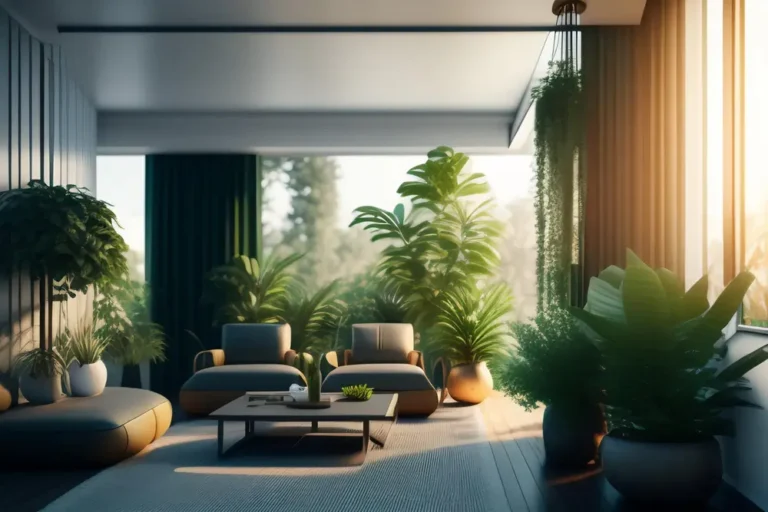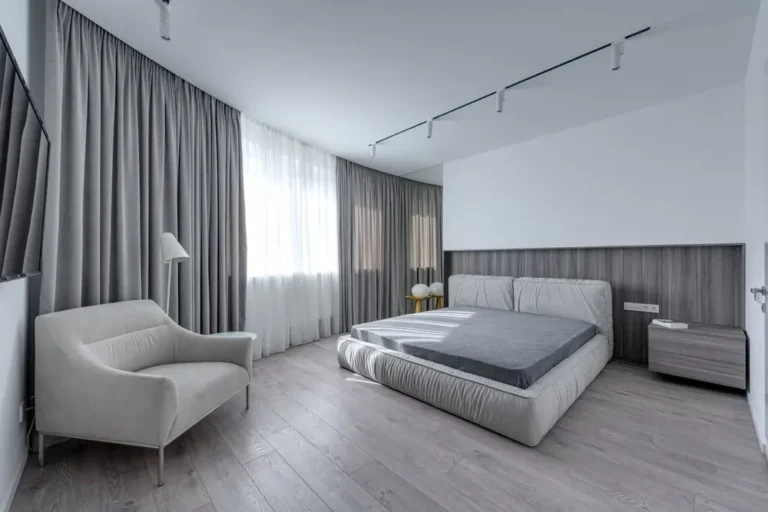In today’s concrete jungles, we’ve become increasingly disconnected from nature. Studies show that the average American spends 90% of their time indoors, leading to higher stress levels and reduced well-being. But there’s a solution: biophilic design. By incorporating these 14 patterns of biophilic design, architects and designers are revolutionizing how we interact with built environments.
14 Patterns of Biophilic Design
Have you ever walked into a space and immediately felt at peace, like you were connected to nature even though you were indoors? That’s no coincidence! It’s likely the result of biophilic design—a design approach that integrates elements of the natural world into modern buildings. Research shows that biophilic design can reduce stress, enhance mood, and even boost productivity by bringing us closer to nature. In this article, we’ll explore the 14 patterns of biophilic design, each of which offers unique benefits for both our mental and physical well-being. Whether you’re designing a home, office, or public space, these patterns can transform environments into more harmonious, nature-inspired places.
1. Visual Connection with Nature
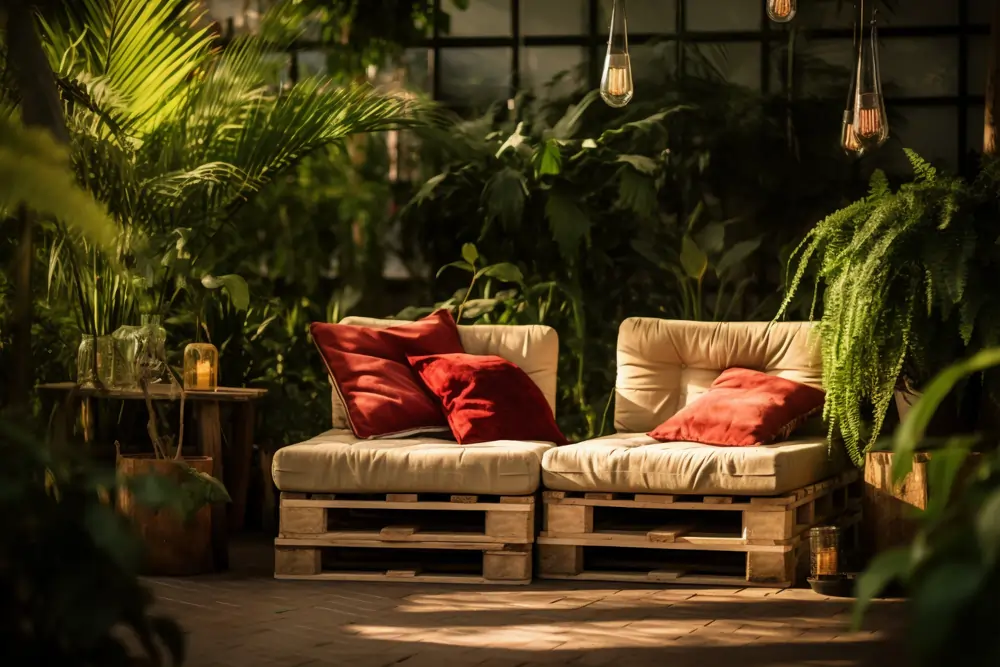 Have you ever thought about the experience of nature right inside our homes? With biophilic design in architecture, incorporating nature in the space is a game-changer. Think green walls, biomorphic forms and patterns, and other natural elements that make us feel good. It’s all about well-being in the built environment and boosting people’s health through smart interior design.
Have you ever thought about the experience of nature right inside our homes? With biophilic design in architecture, incorporating nature in the space is a game-changer. Think green walls, biomorphic forms and patterns, and other natural elements that make us feel good. It’s all about well-being in the built environment and boosting people’s health through smart interior design.
By using biophilic design patterns and design applications, we can bring positive health vibes into our lives. The design process involves research and design to find design opportunities that improve health and well-being. It’s fascinating how subtle changes in air and biophilic responses can make such a difference.
The power of a visual connection to nature extends far beyond aesthetics. A groundbreaking study by Roger Ulrich found that hospital patients with views of nature recovered 8.5% faster and required significantly less pain medication compared to those facing brick walls.
Key applications include:
- Floor-to-ceiling windows overlooking gardens
- Living walls with varied plant species
- Strategic placement of indoor plants
- Digital nature imagery in windowless spaces
2. Non-Visual Connection with Nature
 So, when it comes to connecting with nature in a space, it’s not just about what we see. It’s about the nature of the space within the built environment. Design practitioners have been working to incorporate elements from nature into our surroundings.
So, when it comes to connecting with nature in a space, it’s not just about what we see. It’s about the nature of the space within the built environment. Design practitioners have been working to incorporate elements from nature into our surroundings.
By integrating biophilic elements, we can create appropriate design that mirrors aspects of nature. This approach taps into human biology and the design to foster positive health responses. It’s all about exposure to nature and feeling that satisfaction with the built environment.
Non-visual biophilia engages our other senses, creating a multi-dimensional experience. Research from the University of Queensland demonstrates that natural sounds can reduce stress hormones by up to 37%.
Essential elements:
- Sound of water relaxation through subtle fountains
- Textured materials like rough stone and smooth wood
- Natural ventilation carrying outdoor scents
- Recording of bird songs in urban spaces
3. Non-Rhythmic Sensory Stimuli
 So, when we’re chatting about non-rhythmic sensory stimuli, it’s all about the cool stuff we can do with the design of the built environment. Think of it as sprinkling a bit of nature’s magic into our spaces. Through design research, we find these awesome patterns found in nature that can actually boost our sense of well-being.
So, when we’re chatting about non-rhythmic sensory stimuli, it’s all about the cool stuff we can do with the design of the built environment. Think of it as sprinkling a bit of nature’s magic into our spaces. Through design research, we find these awesome patterns found in nature that can actually boost our sense of well-being.
By using biophilic design elements, we can really make our surroundings pop. These biophilic patterns are like a secret sauce for enhancing health, well-being and productivity. It’s like having a slice of the outdoors indoors, especially with green spaces and other biophilic design applications.
Unlike the predictable hum of an HVAC system, nature’s patterns are refreshingly random. These subtle variations help maintain attention and reduce fatigue.
Examples include:
- Shadows cast by moving water
- Grass swaying in the breeze
- Wind chimes responding to air movement
- Reflected light from water features
4. Thermal & Airflow Variability
Thermal and airflow variability is one of the more subtle yet highly impactful patterns of biophilic design. It’s all about recreating the dynamic conditions we experience in nature, where temperatures fluctuate and the breeze shifts naturally throughout the day. Unlike the controlled, static environments often found indoors, these variations can evoke comfort, focus, and well-being when designed thoughtfully.
The Effect of Natural Temperature and Air Movement Changes on Comfort
Have you ever noticed how stepping outside into a cool breeze feels refreshing after being in a stuffy room? That’s because our bodies are wired to respond positively to natural fluctuations in temperature and airflow. In the wild, air movement and temperature shifts are constant—whether it’s the cool shade of a tree or a sudden gust of wind. Indoors, however, most buildings strive to maintain a consistent temperature, which can lead to a feeling of stagnation.
Variability in thermal conditions creates a dynamic environment that keeps our bodies and senses engaged. It can help reduce fatigue and even improve productivity. People tend to feel more energized when there are gentle changes in the air around them, compared to when they’re stuck in a completely temperature-controlled space. The shifts in airflow can mimic the feeling of being outdoors, which triggers the brain to relax, and that natural flow of air helps to improve the overall air quality, too.
Designing with Varied Thermal Environments for a Dynamic Feel
When designing with thermal variability in mind, the goal is to create spaces where people can experience temperature shifts, rather than constantly being at one controlled temperature. This doesn’t mean making spaces uncomfortably cold or hot; rather, it’s about subtle variations that feel more natural.
For instance, integrating zones of varying temperatures within a room or building can help. In one area, you might have a slightly cooler space with more air movement—perhaps near windows or doors—while other parts of the room maintain a warmer, more insulated feel. Outdoor terraces, courtyards, and semi-outdoor spaces can be designed to allow for natural temperature changes throughout the day. During warmer months, cool breezes can flow in through windows or adjustable openings, while shaded areas offer relief from direct sunlight.
In homes and offices, heating and cooling systems can be designed to mimic these natural changes. Instead of keeping every room at the same temperature, allow for slight fluctuations that mirror the warmth of sunlight or the coolness of a shaded area. Incorporating materials like stone, which retains coolness, or wood, which holds warmth, can also help create more naturally variable thermal environments.
Using Open Windows, Fans, and HVAC Systems to Simulate Natural Conditions
Creating thermal and airflow variability doesn’t require complicated technology; often, simple design choices like strategically placed windows, fans, or adjustable louvers can do the trick. Openable windows are key to introducing natural airflow into a building. Even just a slight breeze can dramatically change how a space feels, making it more comfortable and connected to the outside world. Skylights or clerestory windows can also allow for airflow at higher points, helping circulate air through vertical spaces.
Fans—whether ceiling fans or oscillating ones—are another excellent way to introduce controlled airflow into a room. Not only do they create a refreshing breeze, but they also allow users to adjust the level of air movement to their comfort. Combined with an HVAC system that can adjust temperature zones throughout the day, fans help avoid the monotony of a consistently controlled indoor environment.
One key feature of biophilic design is allowing the user to interact with and control these systems. Giving occupants the ability to open a window, turn on a fan, or adjust a thermostat contributes to comfort because they can adapt the environment to their needs, just like they would outdoors. Programmable HVAC systems that adjust based on time of day or occupancy can also help simulate natural conditions, keeping the air fresh and the temperature dynamic without requiring constant user input.
Incorporating thermal and airflow variability into design doesn’t just make spaces more comfortable—it makes them more alive, offering a richer, more engaging experience for the people who use them. By thinking beyond traditional climate control and inviting nature’s dynamic elements inside, architects and designers can create environments that feel less artificial and more connected to the natural world.
5. Presence of Water
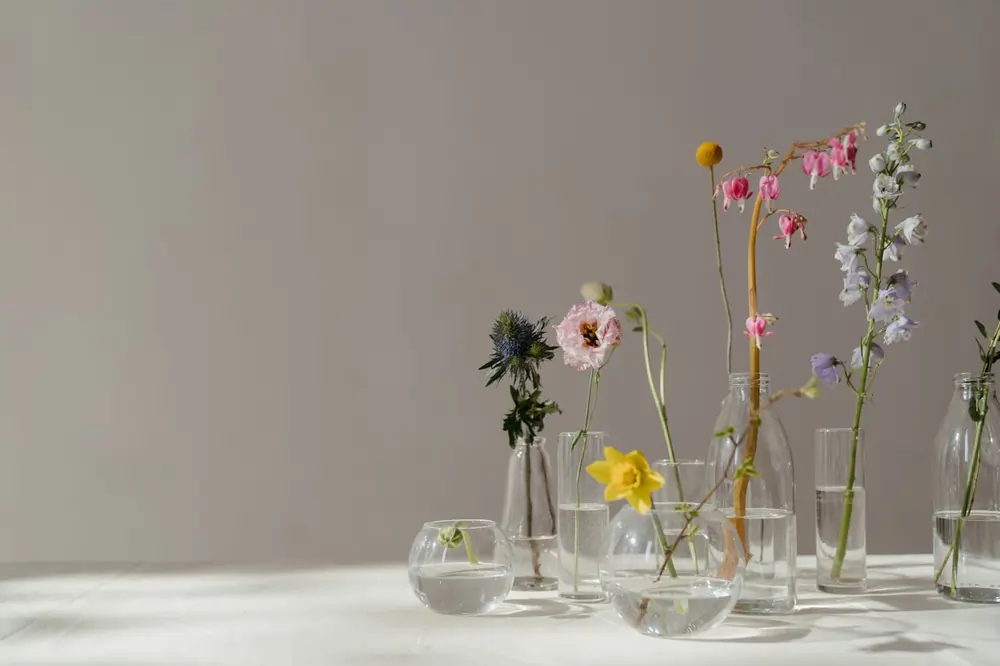 Indoor water features do more than create ambiance. Research from Terrapin Bright Green reveals that exposure to water features can reduce heart rate by 5-7 beats per minute.
Indoor water features do more than create ambiance. Research from Terrapin Bright Green reveals that exposure to water features can reduce heart rate by 5-7 beats per minute.
Practical applications:
- Multi-story waterfalls in atria
- Reflecting pools in courtyard spaces
- Wall-mounted water features
- Floor-integrated water channels
6. Dynamic & Diffuse Light
In the world of design in architecture and planning, using dynamic & diffuse light is like sprinkling magic dust over the built space. It’s part of the conceptual framework of biophilic design, which taps into human biological science and nature to create a pleasing visual environment.
There are 14 patterns that have a wide range of impacts on our relationship with nature, aiming to enhance well-being. By incorporating nature and natural elements, architects can create an environment that feels like a presence of nature, improving perceived physical and mental health.
Natural light in architecture profoundly affects our circadian rhythm and lighting patterns. Studies show proper implementation can increase workplace productivity by up to 18%.
Key strategies:
- Light shelves reflecting daylight deep into spaces
- Dynamic glazing responding to sunlight
- Skylights with diffusing materials
- Changing light in architecture through automated systems
7. Connection with Natural Systems
Hey there! So, there are these 14 patterns that have a wide influence on how we design our built environment to improve our connection with nature. It’s all about creating an environment so that we may feel more like part of nature itself.
Incorporating architecture and planning and presents ideas that mimic arrangements that occur in nature, like using elements inspired by trees or even textile patterns that remind us of the outdoors, can really make a difference.
Connection to seasons and natural processes in design helps occupants maintain awareness of time and weather patterns. This awareness reduces stress and improves sleep quality by 23%.
Implementation methods:
- Green roofs with seasonal plantings
- Weather-responsive facades
- Visible rain collection systems
- Garden integration with native species
8. Biomorphic Forms & Patterns
Hey, have you ever checked out those 14 patterns in design? They’re super cool and have a wide nature that really makes a splash. It’s like the environment is vibing with sound and everything. Plus, these patterns can have some serious health impacts on us. Pretty wild, right?
Biomorphic design patterns and organic forms in architecture recall natural shapes and sequences. The Fibonacci sequence, found throughout nature, forms the basis for many successful designs.
Examples include:
- Spiral staircases mimicking nautilus shells
- Tree-inspired structural columns
- Honeycomb-patterned wall panels
- Fractal-based facade designs
9. Material Connection with Nature
Ever thought about how our material connection with nature is super cool? There are 14 patterns that have a wide impact on us, like the nature that impact our mood and vibe. It’s all about creating an environment that uses sound and feels totally in sync with the outdoors. 🌿
Natural materials in architecture create direct links to the environment. A study of office environments found that spaces with wooden surfaces reduced stress levels by 7.5%.
Recommended materials:
- Exposed timber beams
- Local stone features
- Bamboo flooring
- Cork wall coverings
10. Complexity & Order
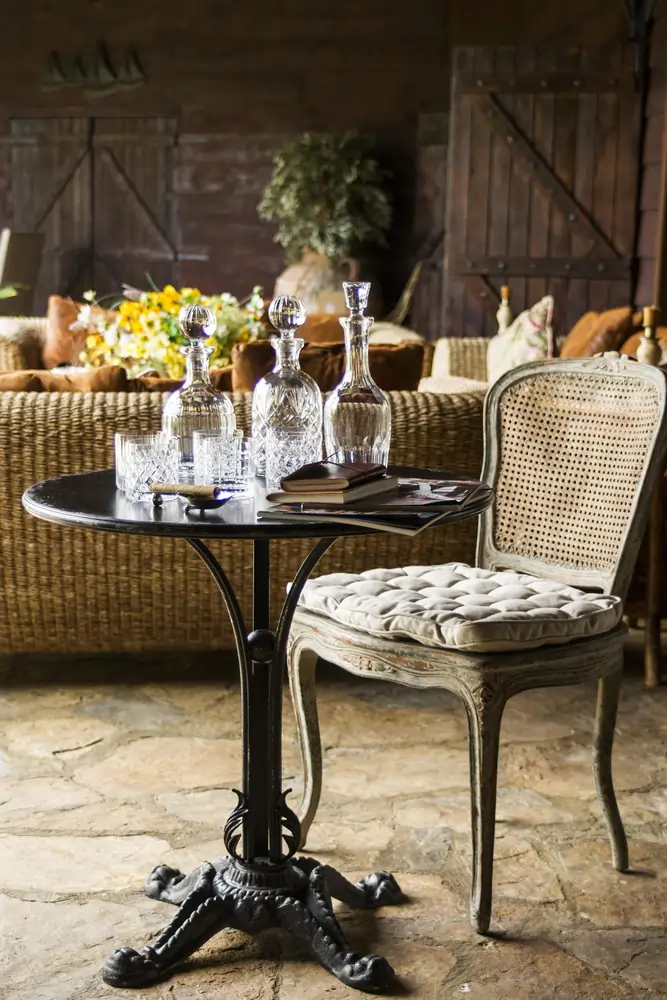 Patterns in nature demonstrate perfect balance between chaos and structure. This principle in environmental design can reduce cognitive fatigue by 15%.
Patterns in nature demonstrate perfect balance between chaos and structure. This principle in environmental design can reduce cognitive fatigue by 15%.
Design considerations:
- Fractally-patterned screens
- Naturally ordered plant arrangements
- Balanced asymmetrical layouts
- Hierarchical space organization
11. Prospect
Open spaces in architecture satisfy our innate desire to survey our surroundings. Offices with good prospect features report 32% higher employee satisfaction.
Design strategies:
- Elevated viewing areas
- Open floor plans with clear sight lines
- Mezzanine levels
- Strategic furniture placement
12. Refuge
Intimate space design and refuge spaces provide necessary contrast to open areas. Research shows these spaces can reduce blood pressure by up to 8%.
Implementation examples:
- Alcove seating areas
- Partially enclosed workspaces
- Reading nooks
- Covered outdoor spaces
13. Mystery
Architecture’s secrets and concealed routes really spark our interest. Studies indicate that spaces with mystery elements increase exploration by 27%.
Design elements:
- Curved pathways
- Partial screening
- Gradual reveal sequences
- Changing elevation views
Measuring Success
Good biophilic design results in measurable outcomes:
- 15% increase in creativity
- 25% reduction in absenteeism
- 33% faster recovery rates in healthcare settings
14. Risk/Peril
The final pattern might seem counterintuitive, but safe excitement design plays a crucial role in engaging occupants. A study by the University of Michigan found that controlled exposure to perceived risk increases focus and memory retention by 28%.
Applications include:
- Cantilevered viewing platforms
- Glass-bottom floor sections
- Elevated walkways with transparent sides
- Water features with apparent depth
The Future of Biophilic Design
Hey, have you heard about the future of biophilic design? It’s all about blending design and sustainable practices with our surrounding environment. By making reference to nature, we’re bringing nature into the built environment to boost health outcomes.
Incorporating biophilia in our design applications means using the 14 patterns that have a wide range of influences. These patterns have a wide range of ways to define aspects of nature that most impact us.
As we face increasing urbanization, the importance of biophilic design becomes more critical. Companies implementing these patterns report:
- 15% increase in employee productivity
- 26% reduction in sick days
- 33% decrease in stress-related complaints
Wellness-focused architecture isn’t just a trend—it’s a necessity for human health and well-being. By understanding and implementing these 14 patterns, we can create spaces that don’t just house us, but help us thrive.
Making Nature Work: Implementation Strategies
The evolution of biophilic design shows us that successful integration requires more than just adding a few plants. Let’s explore how each pattern contributes to creating truly biophilic spaces.
Future Implications
The evolution of biophilic design continues to shape our built environment. As we face growing urban populations, these principles become increasingly crucial for:
- Physical and mental health
- Environmental sustainability
- Workplace productivity
- Healthcare outcomes
Conclusion
Biophilic design is much more than just adding plants to a room—it’s about creating a deeper connection with nature that resonates on multiple levels. By incorporating these 14 patterns into architecture, we can design spaces that promote wellness, reduce stress, and increase productivity. Whether you’re planning a home, an office, or a community space, each pattern offers a unique way to bring the outdoors inside and create environments that truly benefit their inhabitants. Ready to transform your space? Start with just one or two of these patterns, and watch as nature begins to positively influence your design!
The future of architecture lies in this harmonious blend of built and natural environments. As we continue to understand the psychological effects of nature, these 14 patterns will evolve, helping us create spaces that truly enhance human life.
